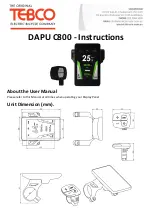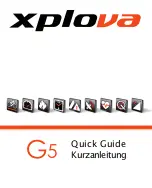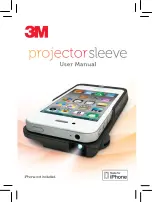
17
7094-803A
04/21
B. Cleaning the Glass & Replacement
Most of the carbon deposits on the glass will burn off during
hot fires.
However, the ash residue that accumulates on the glass
surface should be removed regularly to prevent etching. To
clean the glass, follow this procedure:
• Be sure the glass is completely cool.
• Clean the glass with water or a cleaner made especially for
this purpose. Do not use abrasive cleaners. Use cleaning
agents sparingly and be sure to keep them off the outer
surfaces of the stove.
• Rinse the glass thoroughly.
• Dry the glass completely.
Replace Broken Glass Immediately
Do not operate your stove if the glass in the doors is damaged.
If you need to replace the glass, use only the high temperature
5 mm ceramic glass supplied by Quadra-Fire. Do not use
substitutes.
Service Part: SRV7094-054
1. Ensure that the fire is out and the appliance is cool to the
touch.
2. Protect a table or counter top with padding or towels.
Protect your hands and wear gloves to prevent injury.
3. Remove the door with the broken glass by lifting the door
up and off of the hinges.
4. Lay door face down on a table or counter making sure
the handle hangs over the edge so the door lays flat, on
a soft surface.
5. Remove the screws from each glass retainer and remove
the glass. (If screws are difficult to remove, soak with
penetrating oil first).
6. Center the glass with edges evenly overlapping the
opening in the door, (i.e. same space top and bottom,
left and right sides).
7. Replace the glass retainers. Be careful not to cross
thread the screws.
8. Tighten each retainer just a few turns until each is
secured. Check again for centering of glass in door
frame. Continue to tighten each retainer alternately, a
few turns at a time, until the glass is secure.
NOTE:
DO NOT OVER TIGHTEN RETAINERS - can
cause glass to break.
9. Replace the door on the appliance.
Quadra-Fire appliances are equipped with ceramic super
heat-resistant glass, which can only be broken by impact
or misuse.
Injury Risk.
• Use only glass specified in manual.
• DO NOT REPLACE with any other material.
WARNING
Handle glass assembly with care.
When cleaning glass:
Glass
Assembly
CAUTION
• Avoid striking, scratching or slamming glass.
• Do NOT clean glass when hot.
• Do NOT use abrasive cleaners.
• Use a hard water deposit glass cleaner on white film.
• Use commercial oven cleaner on heavier deposits.
• Remove all residue of oven cleaner or will permanently
stain glass on next firing.
Refer to maintenance instructions.
C. General Maintenance
1.
Creosote (Chimney) Cleaning
• Frequency:
Every 2 months during heating season
or as recommended by a certified chimney sweep;
more frequently if chimney exceeds or is under 14-16
ft. (measured from bottom of appliance)
• By:
Certified Chimney Sweep
Remove all ash from the firebox and extinguish all hot embers
before disposal. Allow the appliance to cool completely.
Disconnect flue pipe or remove baffle and ceramic blanket
from appliance before cleaning chimney. Otherwise residue
can pile up on top of the baffle and ceramic blanket and the
appliance will not work properly. (See
Baffle Board
19
). Close the door tightly. The creosote or soot should be
removed with a brush specifically designed for the type of
chimney in use. Clean out fallen ashes from the firebox.
It is also recommended that before each heating season
the entire system be professionally inspected, cleaned and
repaired, if necessary.
Inspection -
Inspect the system at the appliance connection
and at the chimney top. Cooler surfaces tend to build
creosote deposits quicker, so it is important to check the
chimney from the top as well as from the bottom.
Formation and Need For Removal -
When wood is burned
slowly, it produces tar and other organic vapors which
combine with expelled moisture to form creosote.
The creosote vapors condense in the relatively cool
chimney flue of a newly-started or a slow-burning fire. As
a result, creosote residue accumulates on the flue lining.
When ignited, this creosote creates an extremely hot fire
which may damage the chimney or even destroy the house.
The chimney connector and chimney should be inspected
once every 2 months during the heating season to determine
if a creosote or soot buildup has occurred. If creosote or
soot has accumulated, it should be removed to reduce the
risk of a chimney fire.
Summary of Contents for Expedition-I
Page 2: ...Project 21 661 Model Expedition I Page 1 This page intentionally left blank ...
Page 12: ...Project 21 661 Model Expedition I Page 11 Firebox Volume ...
Page 13: ...Project 21 661 Model Expedition I Page 12 Appliance Front Appliance Left ...
Page 14: ...Project 21 661 Model Expedition I Page 13 Appliance Right Appliance Rear ...
Page 18: ...Project 21 661 Model Expedition I Page 17 Sealed Unit ...
Page 62: ......
Page 63: ......
Page 64: ......
Page 65: ......
Page 107: ...26 04 21 7094 802A Date of Service Performed By Description of Service ...
Page 108: ...27 04 21 7094 802A D Accessories ...
Page 109: ...28 04 21 7094 802A ...
Page 110: ...29 04 21 7094 802A ...
Page 133: ...22 7094 803A 04 21 Date of Service Performed By Description of Service ...
Page 134: ...23 7094 803A 04 21 B Service Parts List ...
Page 135: ...24 7094 803A 04 21 ...
Page 136: ...25 7094 803A 04 21 ...
Page 137: ...26 7094 803A 04 21 ...
Page 138: ...27 7094 803A 04 21 ...
Page 146: ......
Page 153: ......
Page 154: ......
Page 155: ......
Page 156: ......
Page 157: ......
Page 158: ......
Page 159: ......
Page 161: ......
Page 166: ......
Page 167: ......
















































